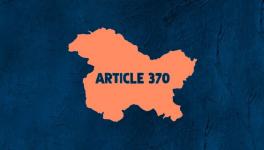Major Loss in India’s Natural Forest Area on International Day of Forest
The International Day of Forests, proclaimed by the UN General Assembly in 2012, aims to increase awareness about the role of forests in sustaining lives. The UN encourages governments to organise activities like tree-planting campaigns at the local, national and international levels in conjunction with the United Nations Forum on Forests and the Food and Agriculture Organisation.
The occasion is celebrated with a particular theme on March 21 every year. The theme for 2022 is ‘Forests and Sustainable Production and Consumption’.
India is among the few countries with a robust scientific system for periodic assessment of forest cover and inventory, and inventory of trees outside forests. India has a total forest cover of 7,13,789 sq km, which is 21.71% of the geographical area of the country. The tree cover is estimated as 95,748 sq km, 2.91% of the geographical area. The total forest and tree cover is 8,09,537 sq km, which is 24.62% of the geographical area.
India has set a target of bringing 33% of its geographical area under forest cover as envisaged in the National Forest Policy, 1988. This was also one of the key targets enlisted in the Strategy for New India @75 document released in December 2018 by the NITI Aayog.
However, forests are suffering. Experts have time and again flagged multiple causes like the decline in forest cover in certain regions, loss of dense forests and an increase in forest fires. The India State of Forest Report (IFSR) 2021, released in January, shows that the country is not adding more dense forests. The cause of concern is a significant loss in areas of natural forests with moderate tree cover. India has more forest cover with tree canopy density in the range of 10%-40%, referred to as ‘open forest’.
The Forest Survey of India divides the forests of India into four categories: very dense forest (with tree canopy density of 70% or more), moderately dense forest (tree canopy density of 40% or more but less than 70%), open forest (tree canopy density of 10% or more but less than 40%), and Scrub (tree canopy density less than 10%).
The IFSR had also noted an increase in forest loss in mountainous states along its Himalayan frontier which are already in the throes of climate change. Jammu and Kashmir, which had very dense forests of 4,270 sq km in 2019, had 4,155 sq km of the same category in 2021. This is the highest loss of ‘very dense forest’ anywhere in India.
The total forest area of Himachal Pradesh increased by 9 sq km. But the state saw a loss of open and moderately dense forest. Himachal Pradesh had an area of 7,126 sq km under moderately dense forests in 2019, which decreased to 7,100 sq km in 2021. The state had open forests spread across 5,195 sq km of its area in 2019, which reduced to 5,180 sq km in 2021.
On this International Day of Forests, it is important to remember that while it is a good thing that India’s forest cover has increased, there are still a lot of causes for concern. The recent amendments to the Forest (Conservation) Act, 1980, are likely to further make the diversion of forest land for non-forest use easier. As much as 55,430.13 hectare of forestland across the country was approved for non-forestry use under the Act between April 2018 and March 2021, according to data presented by the Union ministry of environment, forest and climate change.
Get the latest reports & analysis with people's perspective on Protests, movements & deep analytical videos, discussions of the current affairs in your Telegram app. Subscribe to NewsClick's Telegram channel & get Real-Time updates on stories, as they get published on our website.
























